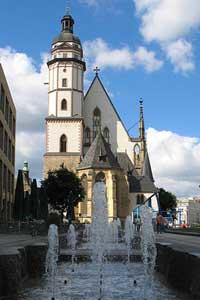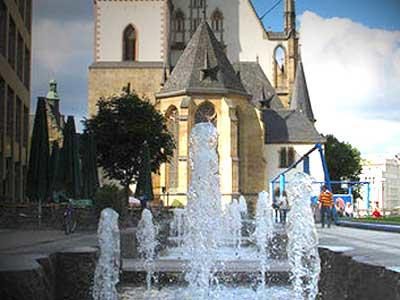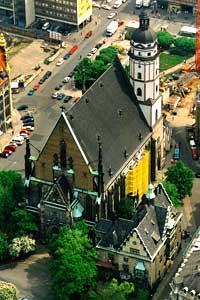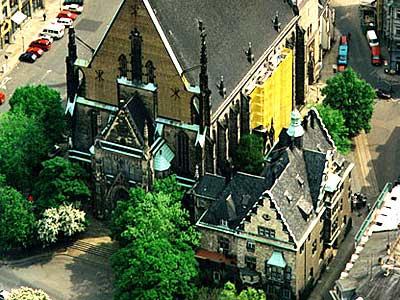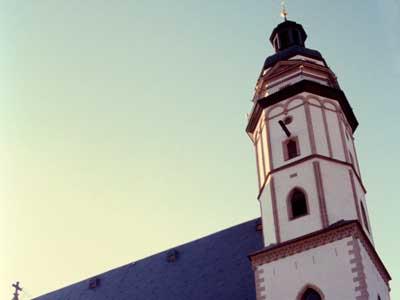Thomaskirche
Constructed in Leipzig, Germany, in the early thirteenth century by the Augustinian monastic order, Thomaskirche, or St. Thomas Church, has been the site of several of Leipzig's most important cultural and historical events. The church initially operated as a monastery before housing the University of Leipzig in the fifteenth century and the St. Thomas school in the sixteenth century. In 1539 Martin Luther introduced religious reform to Leipzig while preaching at the church. Bach served as choirmaster at Thomaskirche from 1723 until his death in 1750, and many notable composers, including Mozart, performed there. Originally constructed in the Romanesque style, the building was later altered in the Gothic period. Romanesque features are still present in the building and can be found in a window on the north side of the choir, portions of the lower floor of the tower, the crossings, arches, and corbels. The church roof, set to 63 degrees and dating to 1486, was an engineering feat in its era. The steep-pitched front gabled roof has been, and continues to be, an enduring feature of the Leipzig skyline. The church tower was damaged during the Second World War and later restored.
2000 World Monuments Watch
Thomaskirche was included on the 2000 World Monuments Watch because of longstanding conservation issues. Subsequent to its listing, World Monuments Fund assisted with repair and restoration work focused on the wooden roof truss system, including the slate and roof shingles, which had been damaged by insects and water. Restoration work was also performed on the sandstone façade, which had deteriorated from pollution. The interior vault and gallery paintings were also given attention. The restoration, completed in July 2000 on the 250th anniversary of Bach’s death, included the building of an organ intended to replicate the original sounds created by the composer.
Thomaskirche holds both historical and architectural significance. Important historical figures, as well as monumental events, were associated with the structure. The church is a striking example of Romanesque and Gothic architecture in the region and the roof—innovative for its time—remains a unique feature of the building and the cityscape.

